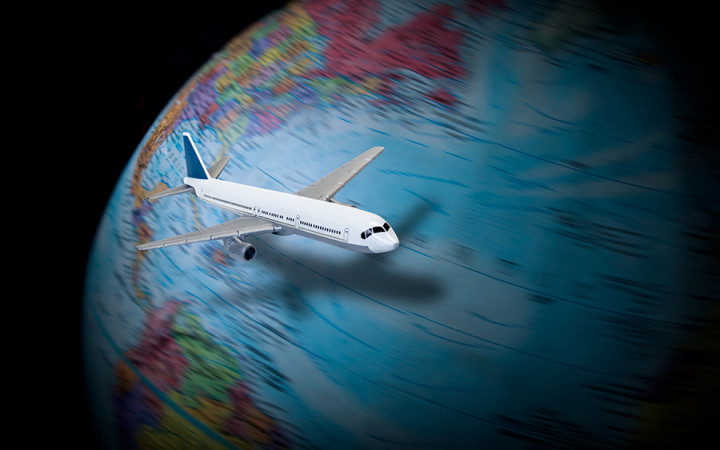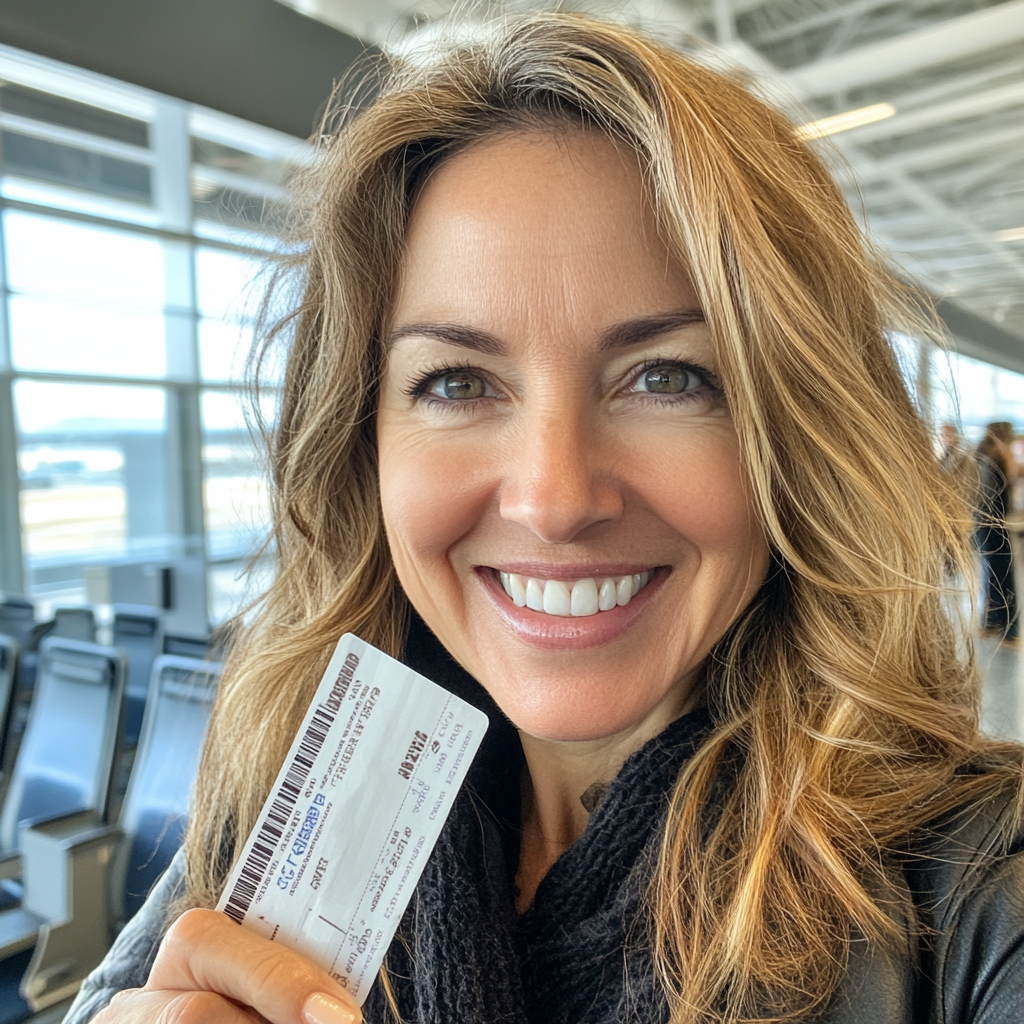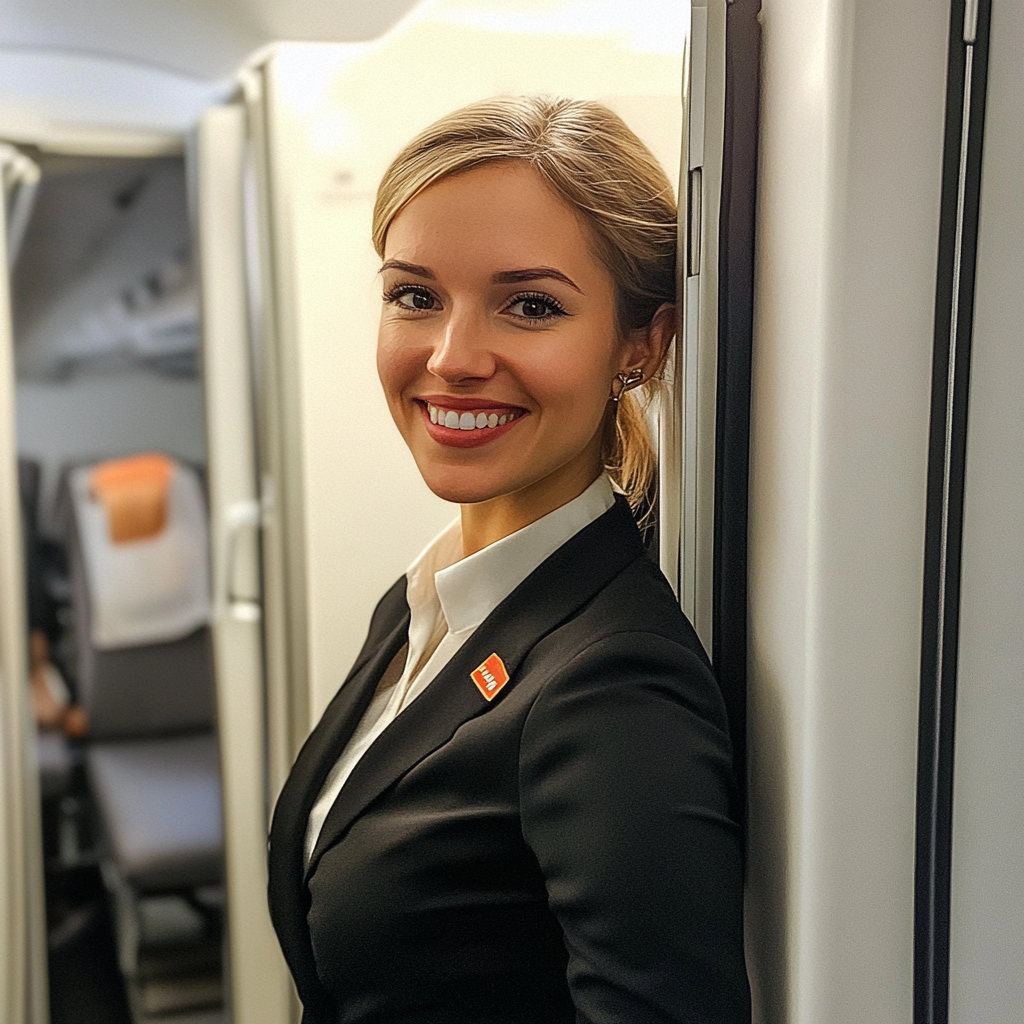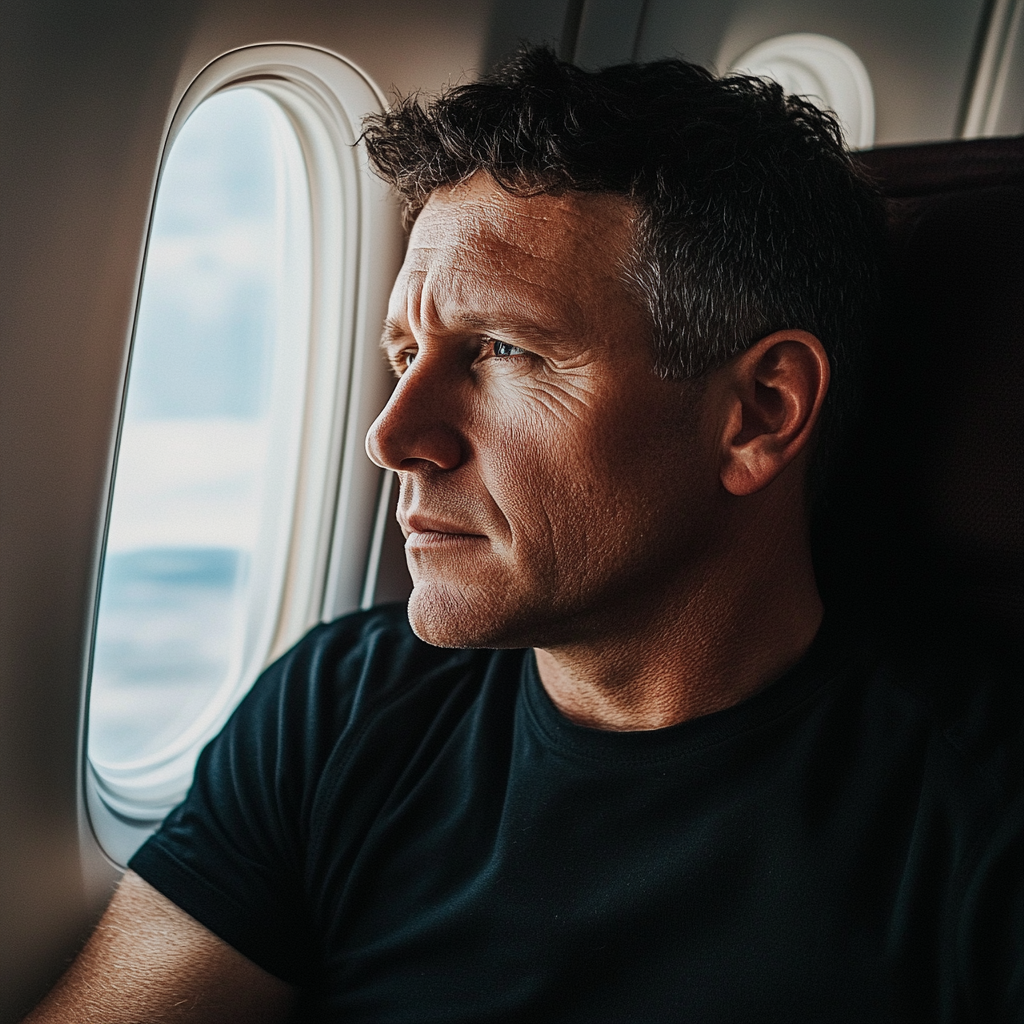Have you ever looked at a flight path on a map and wondered why airplanes take curved routes instead of flying in a straight line? Wouldn’t flying in a direct line be more fuel-efficient and faster? At first glance, it seems logical that a shorter distance would result in less fuel consumption, but in reality, aviation is far more complex.
Several factors determine flight paths, including the Earth’s shape, jet streams, weather conditions, and air traffic regulations. Let’s break down why airplanes rarely fly in a straight line and how their curved paths actually make flights more efficient.
The Earth’s Shape and the Great Circle Route

One of the biggest reasons airplanes don’t fly in a straight line is the Earth’s curvature. While we often view flight maps as flat, the Earth is a sphere, and the shortest path between two points is actually an arc called the Great Circle Route.
If you take a globe and use a string to connect two distant locations, you’ll notice that the shortest route often curves rather than follows a straight path. This is why flights from New York to Tokyo pass over the Arctic region rather than flying directly west across the Pacific Ocean.
Using the Great Circle Route helps planes save both time and fuel, even though it appears curved on a flat map.
Jet Streams and Weather Conditions Impact Flight Paths
Another key factor affecting airplane routes is jet streams—high-altitude wind currents that move at speeds of up to 200 mph (320 km/h). Pilots strategically plan routes to take advantage of these strong winds when possible.
Video : Why Airplanes Don’t Fly Straight
Flying with jet streams allows an airplane to get an extra push, helping it move faster while burning less fuel. Flying against a jet stream can slow down the plane significantly, increasing fuel consumption. Pilots often adjust routes to avoid strong headwinds, even if it means flying a longer distance.
Additionally, storms, turbulence, and severe weather conditions also play a role in determining flight paths. Airplanes may adjust mid-flight to bypass dangerous weather zones, thunderstorms, or areas with extreme turbulence.
Air Traffic Control and Flight Regulations
Air traffic isn’t a free-for-all where planes can just fly wherever they want. There are strict regulations set by aviation authorities and air traffic control (ATC) that dictate flight routes.
Some of these rules include restricted airspace, where certain areas, such as military zones, national security locations, and political zones, prohibit commercial flights from entering. Predefined flight corridors exist to avoid mid-air collisions, ensuring flights follow established air traffic lanes. Major airports handle hundreds of flights daily, so ATC ensures safe and efficient arrivals and departures.
Due to these regulations, airplanes cannot always take the most direct path and must follow designated routes instead.
Avoiding Air Turbulence for Passenger Comfort
Turbulence can make a flight uncomfortable, and pilots actively adjust routes to minimize rough air conditions. There are different types of turbulence, including thermal turbulence caused by warm air rising from the ground. Flying at higher altitudes helps avoid this.

Mechanical turbulence happens near mountains and rough terrains where wind patterns shift unpredictably. Clear-Air Turbulence (CAT) is sudden, strong air currents in high altitudes that are difficult to predict.
To ensure a smoother ride for passengers, pilots may deviate from the shortest path to avoid these turbulent areas.
Why Do Airplanes Sometimes Ascend Before Landing?
If you’ve ever been on a flight where the plane suddenly climbs just before landing, you might have felt a bit concerned. This maneuver is known as a go-around and is actually a common and safe aviation practice.
Some reasons why pilots perform a go-around include runway clearance issues. If another plane hasn’t cleared the runway in time, pilots must abort the landing and circle back. Poor weather conditions, such as poor visibility, strong crosswinds, or sudden gusts, can make a landing unsafe. If a plane is too fast, too high, or not properly aligned with the runway, the pilot will ascend and try again for a safer landing.
Go-arounds are standard procedures in aviation and ensure passenger safety above all else.
The World’s Longest Non-Stop Flight
While most flights follow curved paths, some routes push the limits of non-stop travel. The longest direct commercial flight in the world is from Singapore to Newark, New Jersey, USA.
This flight covers a distance of 10,400 miles (16,700 km) and takes approximately 18 hours and 45 minutes. It follows a carefully optimized path to balance fuel efficiency, wind conditions, and passenger comfort.
Video : Does Earth’s Rotation affect the Airplanes Speed & Flight Time
What Happens If a Plane Suddenly Loses Cabin Pressure?
A sudden drop in cabin pressure is often portrayed as a dramatic event in movies, but in reality, pilots are well-trained to handle it calmly.
When this happens, oxygen masks automatically deploy, and passengers should put them on immediately and breathe normally. The plane will descend to a safe altitude where oxygen levels are sufficient for breathing. The flight crew will assess the situation and communicate with passengers.
Losing cabin pressure doesn’t mean the plane will crash—pilots follow strict safety protocols to handle such incidents efficiently.
Final Thoughts: Why Curved Flight Paths Are More Efficient
While it may seem counterintuitive, airplanes take curved routes instead of straight lines to optimize flight efficiency, fuel usage, and passenger safety. Factors such as the Earth’s shape, jet streams, air traffic control, and weather conditions all play a crucial role in determining flight paths.
So next time you’re on a plane and see the route map displaying a curved flight path, remember there’s a lot of science and planning behind it to ensure you reach your destination as safely and efficiently as possible.
A Free Vacation Sounded Amazing Until I Found Out My Ex-Husband Was Coming Too — Story of the Day

A free vacation with a stranger sounded too good to be true—but the email didn’t ask for credit card details, or even personal information: just a ticket, a hotel, and a mystery companion. Intrigued, I boarded the plane, only to find out my “stranger” was someone I never wanted to see again.
It was a typical Friday evening, but my body felt like it had gone through a whole week’s worth of exhaustion.
I had barely kicked off my shoes before collapsing onto my sister Deborah’s couch, one arm draped over my face, the other lazily scrolling through my inbox on my laptop.
Across the room, Deborah was in her own world. She paraded around in front of the mirror, changing into outfit after outfit, twirling, striking poses like she was on a runway.
The crinkling of shopping bags and the rustle of fabric filled the air as she excitedly switched between clothes she had just bought.

For illustration purposes only. | Source: Midjourney
She did a quick spin and looked at me expectantly. “What do you think?”
I barely glanced up, giving her dress a lazy once-over before smirking. “Nice, Deb. But I don’t get why you need so many clothes.”
Deborah scoffed, hands on her hips. “Of course, you don’t. You weren’t the one stuck wearing hand-me-downs your entire childhood.”
She dramatically flipped her hair. “Consider this my therapy. I’m healing, Charlie.”

For illustration purposes only. | Source: Midjourney
I shook my head. “Whatever you say…” My attention drifted back to my laptop, aimlessly clicking through emails.
Mostly junk. Bills. Newsletters I forgot to unsubscribe from.
Then, something made me pause.
I sat up straight, my eyes narrowing at the subject line of an email I didn’t remember signing up for.
“Congratulations! You’ve won a free two-day vacation with a mystery travel companion!”
Before I could process it, Deborah’s voice interrupted.

For illustration purposes only. | Source: Midjourney
“How about this one?” she asked, stepping into another dress.
I didn’t answer.
Silence stretched for a moment.
“Charlie?” She turned, raising an eyebrow. “Are you even listening?”
I snapped out of it. “Huh? Sorry, I just got some weird email…” I frowned, rereading it.
“It says I won a free two-day vacation with a stranger. Definitely a scam.”

For illustration purposes only. | Source: Midjourney
Deborah’s jaw dropped. “What!? A free trip? Let me guess—do they need your credit card info or social security number?”
“That’s the thing… they don’t.” I scrolled through the email again, expecting a scammer’s red flag.
“No banking details, no suspicious links. Just a confirmation with my name, flight itinerary, and a hotel reservation.”
Deborah practically lunged across the couch, leaning over my shoulder. “Let me see.”
I tilted my screen toward her. She scanned the email, her expression shifting from skepticism to shock.

For illustration purposes only. | Source: Midjourney
“No way… Charlie, this looks legit! There’s an actual reservation—flights, hotel, even travel insurance. It’s all here.”
I shook my head. “No, there’s got to be a catch. No one just hands out free vacations.”
Deborah’s eyes darted across the screen, clicking on links, cross-checking details. Finally, she leaned back, arms crossed.
“I can’t find anything suspicious.” She turned to me with a huge grin. “Charlie, you actually won this trip. Congrats, sis.”

For illustration purposes only. | Source: Midjourney
I chewed my lip, unsure whether to feel excited or terrified.
“I can’t just go on a trip with some random person.”
Deborah waved a hand dismissively. “Why not? It’s free. And maybe, just maybe, this ‘stranger’ is a hot guy who’ll finally end your dry spell.”
I shot her a glare. “Deborah! I like being single, okay? That’s my choice.”
She smirked. “Sure… I’ve heard that after every ‘seasonal fling’ since your divorce.”

For illustration purposes only. | Source: Midjourney
I grabbed a pillow and threw it at her head.
She dodged, laughing. “Hey! Just saying. Maybe it’s fate.”
Fate or not, something about this whole thing felt strange.
And yet, a small part of me wondered…
What if?
The next day, I stood at the airport terminal, gripping my suitcase so tightly my knuckles turned white. The ticket in my hand felt heavier than it should.

For illustration purposes only. | Source: Midjourney
I still couldn’t believe Deborah had convinced me to go.
This was completely insane.
Some strangers had sent me free tickets for a contest I didn’t even remember entering. And somehow, I had agreed to spend two days traveling with a mystery person.
The more I thought about it, the more ridiculous it seemed.
I exhaled sharply and turned toward the exit.
What am I doing?

For illustration purposes only. | Source: Midjourney
Every logical part of my brain screamed to leave before it was too late.
I swallowed, staring at the automatic doors. I’ve always been cautious. Always taken the safest route.
I can’t keep running from new experiences.
I let out a slow breath, forcing myself to turn around.
Business class felt surreal. The soft leather seats, the spacious legroom, the complimentary drinks—this was a world I had never stepped into before.
But none of it mattered.

For illustration purposes only. | Source: Midjourney
My focus was on the people boarding, scanning faces, wondering who my seatmate would be.
Would they be talkative? Annoying? Would we have anything in common?
Then, I reached my seat.
A man was already there, hunched forward, scrolling on his phone.
I took a hesitant step forward.
He turned slightly.
My stomach dropped.

For illustration purposes only. | Source: Midjourney
“…Luther?” My voice barely escaped my lips.
His head snapped up, eyes widening. The same piercing gaze I had once loved. The same face I had tried to forget.
“Charlotte?” He blinked. “What the hell are you doing here?”
I exhaled sharply, my heart slamming against my ribs. “Please don’t tell me you also got these tickets.”
Luther ran a hand through his hair, still looking as confused as I felt.
“…Through some contest email? Yeah. You too?”

For illustration purposes only. | Source: Midjourney
I groaned, every fiber of my being screaming at me to leave.
“Oh no. No, no, no. This is too much. I’m leaving.” I spun on my heel, ready to march straight off the plane.
But before I could take a step, a gentle but firm hand landed on my shoulder.
I turned to find a flight attendant offering a polite but unshakable smile.
“The plane is preparing for takeoff, ma’am. Please remain seated.”
I opened my mouth to argue, but before I could, Luther spoke first.

For illustration purposes only. | Source: Midjourney
He turned to the attendant with that same damn charming smile I had seen a million times before.
“It’s okay, everything’s fine.” Then he reached for my hand, squeezing it lightly—just like he used to when he wanted me to calm down.
My body remembered before my mind did.
For a second, just a single second, my breath caught.
Then, I ripped my hand away.
No. Not again.

For illustration purposes only. | Source: Midjourney
“Charlotte, our marriage ended years ago,” Luther said, his voice softer now. “Please don’t ruin your free trip just because of me. I promise, I won’t bother you.”
I narrowed my eyes. “If I had a dollar for every time I heard that from you…”
Luther smirked. “Then you’d be rich. But seriously, let’s just coexist for two days.”
I hesitated, my entire body itching to refuse.
But what was I supposed to do?
The plane was boarding, and I wasn’t about to miss my first-ever business class flight just because of Luther.

For illustration purposes only. | Source: Midjourney
With a long, frustrated sigh, I dropped into my seat.
“Fine. Just don’t ruin this trip for me.”
Luther leaned back, grinning. “Only your best years of youth.”
I turned toward the window, ignoring him.
I never expected to see Luther again. And honestly? I had hoped I never would.
The moment we stepped into the oceanfront hotel, I felt my breath catch.

For illustration purposes only. | Source: Midjourney
The grand entrance, the towering glass windows reflecting the sea, the marble floors that seemed to stretch endlessly—everything about the place screamed luxury.
For the first time since this ridiculous trip started, I was almost glad I came.
And then Luther stepped up beside me.
“Nice place, huh?” he said, slipping his hands into his pockets.
I forced a tight smile. “Yeah. Not bad.”
“Reminds me of the hall where we had our wedding. Same décor.”

For illustration purposes only. | Source: Midjourney
My stomach twisted. My jaw clenched.
“Oh, so now you’re reminiscing about our wedding?” I snapped. My voice came out sharper than I intended, but I didn’t care.
Luther’s easygoing expression faltered. “Charlotte, let’s not—”
“No, let’s.” I folded my arms, my heart pounding with anger. “You suddenly want to relive the past? Let’s talk about how you destroyed everything.”
A muscle in his jaw tightened. He sighed, shaking his head before grabbing our bags and walking toward the elevator.
“Can we not do this in the lobby?” he muttered.

For illustration purposes only. | Source: Midjourney
I should’ve let it go. I should’ve kept my mouth shut.
But years of hurt, betrayal, and anger had been buried inside me for far too long.
And now?
I wasn’t about to let him walk away from it.
The moment we stepped into the hotel room, the door barely clicked shut before the words exploded out of me.
“Afraid someone will hear about what you did?”
Luther stiffened. He turned, facing me, his eyes shadowed with something I didn’t recognize.

For illustration purposes only. | Source: Midjourney
“Charlotte, please—”
“Don’t call me that!” My voice cracked. “You cheated on me, Luther!”
A heavy silence fell between us.
Luther ran a hand through his hair, exhaling like he was bracing himself for something painful.
For the first time since seeing him again, he actually looked ashamed.
“I know.” His voice was quiet. “And I’m sorry. I never wanted to hurt you.”
A bitter laugh escaped me.

For illustration purposes only. | Source: Midjourney
“Well, congrats. You did. And I don’t care about your apology, or your excuses.” I stepped back, my voice turning cold. “You don’t get to ruin any more of my life. You hear me?”
I stormed across the room, grabbing one of the beds and dragging it to the opposite side.
“For the next two days, don’t talk to me. Don’t even look at me.”
Then I slammed the bathroom door behind me.
The first day flew by. I spent it by the pool, avoiding Luther at all costs.
But something nagged at me.

For illustration purposes only. | Source: Midjourney
He hadn’t left the room.
That night, when I returned, I heard coughing from the bathroom. Deep, dry, painful.
A tissue lay on the floor. It was stained with blood.
I froze.
Then the bathroom door opened, and Luther stepped out.
I stared at him. “What stage?”
His eyes softened. “Stage four.”

For illustration purposes only. | Source: Midjourney
I swallowed hard. “When did you find out?”
“Six months ago.” He sighed. “It’s strange, living when you know you’re dying.”
I bit my lip. “I’m sorry.”
“This trip… it wasn’t a contest. I arranged everything,” he admitted.
My heart stopped.
“Why?”
“Because I needed to see you one last time,” he said. “To say I’m sorry. And to tell you… I never stopped loving you.”

For illustration purposes only. | Source: Midjourney
Tears blurred my vision.
“Is it too late?” I whispered.
Luther smiled sadly. “For me, yes. But for you? You have your whole life ahead of you, Charlotte. And I hope it’s a beautiful one.”
I squeezed his hand.
“Thank you, Luther.”
Tell us what you think about this story, and share it with your friends. It might inspire them and brighten their day.



Leave a Reply